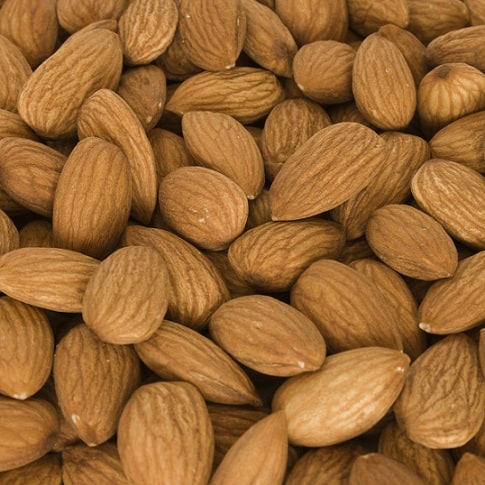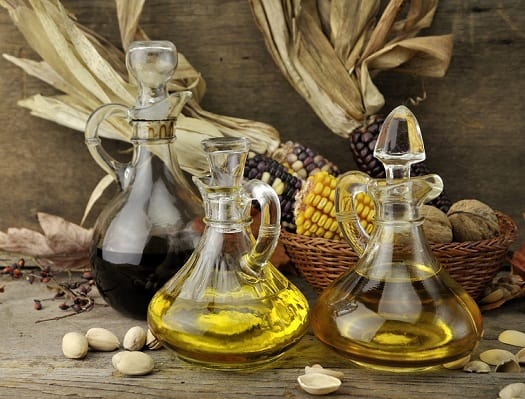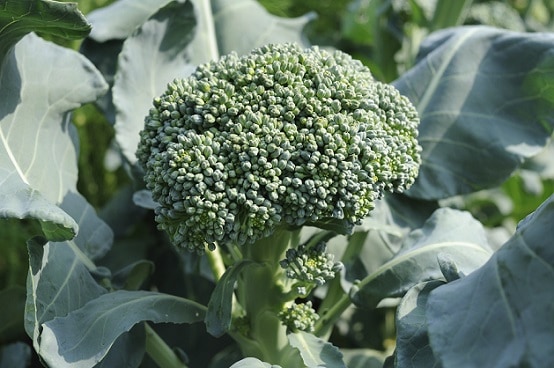 Vitamin E is among the top five acne nutrients in existence. You can keep your hormones in check, you can avoid sources of free radicals, and you can practise good hygiene, but if you don’t consume vitamin E, your chances of curing acne are very slim indeed.
Vitamin E is among the top five acne nutrients in existence. You can keep your hormones in check, you can avoid sources of free radicals, and you can practise good hygiene, but if you don’t consume vitamin E, your chances of curing acne are very slim indeed.
Vitamin E deficiency is not common among the general population, but among acne patients rates are markedly higher. Vitamin E is not a nutrient that will work well but is just an optional boost; it is absolutely VITAL for your acne clearing efforts. Here’s why…
Why vitamin E is a miracle for acne
 On acne.org, vitamin E scores 4.3/5 and apparently 79% of acne patients would recommend it to a friend. Vitamin E is up there with vitamin A and zinc in the elite circle of ultimate acne nutrients.
On acne.org, vitamin E scores 4.3/5 and apparently 79% of acne patients would recommend it to a friend. Vitamin E is up there with vitamin A and zinc in the elite circle of ultimate acne nutrients.
Zinc is the king of minerals for keeping the immune system in check. Vitamin A is the best weapon ever for controlling oily skin.
Vitamin E is mainly fantastic for acne because it helps to prevent sebum oxidation. If you’ve read this article then you’ll know that sebum oxidation is when your sebum (the oil on your face) reacts with oxygen.
It is the squalene, a major component of sebum, that does this, and this reaction forms squalene peroxide. That is one of the most comedogenic substances in the world; in other words, it’s great at blocking your skin pores.
Read Annihilate Your Acne – get the ultimate diet for clear and glowing skin!
The problem is that squalene peroxide both increases the amount of keratin your skin produces, and triggers a further localised increase in sebum production.
Keratin glues your dead skin cells together into giant clumps, and when you add the sebum, you have formed a perfect pore-blocking recipe for fresh acne.
Most people simply see a face covered with oil and assume that it’s sebum alone that blocks your pores. While sebum does cause acne itself, the problems really accelerate when that sebum oxidises. Squalene peroxide is roughly twice as effective as regular sebum for blocking pores.
Moreover, there’s evidence that squalene peroxide can trigger inflammation in the skin directly. Usually it’s your immune system’s response to acne bacteria that creates inflammatory acne.
Where vitamin E comes in
Although too much sebum is totally unnecessary and will indeed block your pores, you do need some sebum to deliver nutrients to your skin cells. It’s also important to deliver acids to your skin’s acid mantle, a defensive barrier which keeps certain deadly bacteria from entering your body.
Your body has to prevent your sebum from oxidising because that renders it ineffective. Consequently, all sebum manufactured by your sebaceous glands is equipped with antioxidants to keep it strong.
Important article – the top 6 vitamins and minerals for clearing acne
Theoretically, you could have a face that’s dripping with oil, but if it was equipped with enough antioxidants, none of the squalene would oxidise and you wouldn’t get acne.
I still have oily skin due to genetics, yet I hardly have any acne nowadays because I purposefully load my diet with fruits like bananas and pomegranate, vegetables like broccoli, herbs and dark chocolate.
Why is this relevant? It’s relevant because vitamin E is the main antioxidant your body uses to protect sebum.
Not all acne antioxidants will do the trick of protecting sebum – the antioxidant has to be fat-soluble. There are two broad categories of antioxidants: water-soluble, and fat-soluble. As you may be able to guess, the water-soluble ones protect water-based substances in your body from oxidising, whereas the fat-soluble ones protect fat-based, or lipid tissues from oxidising.
An example is the dietary fat you eat; if you take a fish oil tablet, then in order to enjoy the omega 3s and prevent highly harmful free radicals from forming, your body has to keep the fats from oxidising. Hence you have specific antioxidants like carotenoids or vitamin E which are specially equipped to function in fat tissue.
Important article – the top 7 natural topical treatments for acne
Sebum is just another bodily substance where fat soluble antioxidants are ideal, because sebum is mostly made up of fatty acids. Sebum is comprised of 41% triglycerides, 26% wax esters, 16% free fatty acids, and 12% squalene.
Vitamin E is the second most abundant antioxidant in your body, and the single most abundant fat-soluble antioxidant. Just as importantly, vitamin E is a particularly potent antioxidant too.
Therefore, all sebum you produce is equipped with vitamin E from birth to prevent oxidation. How much it is equipped with is a different story. Your body can’t manufacture vitamin E, it has to be obtained from the diet. If you don’t have the dietary know-how then your sebum simply won’t contain enough, it’ll be weak, and it’ll constantly be oxidising and causing acne.
There are no mechanisms in place to provide vitamin E in squalene when your body doesn’t have enough. Acne patients have been shown repeatedly to have lower levels of vitamin E in their skin than average. That’s partly due to a dietary deficiency, but also because of high free radical consumption; if there are too many oxidising reactions going on in the rest of your body then your vitamin E gets distracted.
What happens if you don’t get enough vitamin E?
If you are deficient in vitamin E, then the same quantity of sebum on your face will be far more damaging compared to if you weren’t. You will lack the antioxidant capacity to protect even a moderate level of sebum production.
That will then kick-start the following cycle: your sebum oxidises, squalene peroxide forms, it causes your skin pores to get blocked, p.acnes floods into those pores, your body attacks the bacteria with an inflammatory response, and finally acne and pimples are born.
Why bread and pasta are a massive cause of acne
You don’t hear about vitamin E deficiency very much and that’s because it’s not very common. However it is common among acne patients, in the bloodstream as well as the skin.
This study compared acne patients to people with clear skin, and found that the acne patients had significantly lower levels of vitamin E. Therefore the chance that you need more vitamin E to clear your acne is extremely high.
Your vitamin E strategy
 What you must do to clear acne is get more vitamin E through your diet. If your goal is simply to get to the recommended daily allowance then you don’t need a supplement; you can get enough from food.
What you must do to clear acne is get more vitamin E through your diet. If your goal is simply to get to the recommended daily allowance then you don’t need a supplement; you can get enough from food.
Here are some of the best vitamin E foods for acne…
Broccoli – an excellent source and a good way to boost your totals if you eat a serving every day. Broccoli also contains plenty of vitamin C, magnesium, and acne antioxidants. Remember to cook your broccoli in the optimal way – steaming is by far the best for acne. In this article we discussed how boiling or microwaving broccoli can significantly reduce many of the acne nutrients including vitamin C.
Read the eBook: learn why vegetable oils are an acne nightmare
Vitamin E was not mentioned in any of the studies but as a delicate vitamin, it generally falls victim to the same problems that vitamin C does; therefore you should steam your broccoli for best results. Spinach is another leafy green that’s a good source.
Both broccoli and spinach have numerous other benefits too; they have plenty of vitamin C, vitamin A, and magnesium. Spinach also has the power to feed your healthy gut bacteria. If word hasn’t reached you yet, then increasing and diversifying the bacterial strains in your gut is one of the best acne strategies ever.
Almonds – a particularly great source and the best of all nuts. Almonds aren’t usually cooked so you don’t have to worry about getting the most out of them. Eating 40 almonds will provide you with over 50% of the daily allowance for vitamin E, and seeing as almonds are very easy to eat, that makes them excellent for boosting your daily intake.
The vitamin E in almonds is mostly in the form of alpha-tocopherol, an effectively used form of the nutrient. This study found that eating plenty of almonds increased vitamin E levels in the body substantially.
Eggs, meat and fish – good sources, none of them are a standout source, but including plenty in your diet will boost your totals nicely. Make sure to buy good quality produce and not overly processed versions.
Olive oil – almost all common vegetable oils whether it be sunflower oil or canola oil are “good” sources of vitamin E, but they’re all fatally flawed. Sunflower oil, canola oil, and corn oil are some of the worst foods for acne in existence. The only liquid vegetable oil which is beneficial for acne is olive oil, and that’s lucky, because it contains 14% of the RDA for vitamin E per 20 grams. Olive oil is ideal for adding to roast white potatoes for a healthy carbohydrate meal.
Getting the bare minimum of vitamin E for acne is something that many people fail to do, but it’s a piece of cake.
Almost all foods contain small amounts, so if you eat a good variety of fruit and vegetables, and include some of the acne-friendly foods mentioned above then you’ll easily get enough.
Raw honey – a natural secret for wiping out acne bacteria
Brazil nuts are another great source, and have the added acne bonus of being the world’s greatest selenium source. Taking a multivitamin with vitamin E will provide a nice bonus. If you have acne that’s particularly rampant then I recommend that you eat a handful of almonds each day and also a good serving of broccoli.
Broccoli is a good food for its anti-cancer benefits as well; it’s one of the staple vegetables in my diet. When I was in acne-fixing mode a few years back I used to eat a lot of almonds too, and I definitely noticed an improvement in my acne when I did.
Is overdosing possible?
 There aren’t too many vitamins that you can overdose on but vitamin E is one of them. Getting too much will lead to a condition known as hypervitaminosis-e. Symptoms include high levels of bleeding, blotchy skin, and a crippling of the activity of vitamin K. According to scientists, you will develop hypervitaminosis-e if you consume over 1000mg per day…
There aren’t too many vitamins that you can overdose on but vitamin E is one of them. Getting too much will lead to a condition known as hypervitaminosis-e. Symptoms include high levels of bleeding, blotchy skin, and a crippling of the activity of vitamin K. According to scientists, you will develop hypervitaminosis-e if you consume over 1000mg per day…
…but the good news is that this level is almost impossible to reach, at least through your diet. Eating bucket after bucket of almonds wouldn’t get you there; even megadoses of vitamin E supplements wouldn’t manage it. Clearly you shouldn’t go ridiculously overboard, but the daily allowance is 15mg and most supplements contain about that quantity. Overdosing is not likely to happen even if you megadose…
…and therefore it’s a great idea to do just that. If your sebum production is high, and it likely is if you have the genetics in place, then you will use up a lot more vitamin E protecting it. For example, if a woman had a slightly oily face, then she could cure her acne by obtaining just the daily allowance of vitamin E, but if her face was extremely oily, then she would require a lot more.
It’s quite simple: the oilier your skin, the more vitamin E you need to prevent acne. Seeing as an overdose only occurs at intakes of 1000mg per day, taking 100mg a day or more could be a great idea for you.
Why vitamin C is the acne nutrient you cannot ignore
What I recommend that you do is firstly, fix your diet. Make sure you eat plenty of green vegetables, throw in some almonds, eat numerous minor sources like eggs, and monitor how your skin progresses. If your acne doesn’t calm down or only gets slightly better then add a vitamin E supplement equivalent to at least the daily allowance.
Monitor the results again, and if you see a significant improvement in acne without changing anything else in your diet, then you’ll know that vitamin E did the trick.
If you see noticeable improvements in acne but still aren’t satisfied, then you can take double the RDA, 100mg of vitamin E, or maybe more. Experimentation will yield wonders for you, and that’s true for nearly every acne strategy. To be safe, it’s best not to exceed 500mg per day, but you’d probably blow your entire bank account on supplements to get to that stage anyway.
The best vitamin E supplement
For vitamin E it is particularly critical that your supplement is natural. You may have read reports in the media that vitamin supplements are fraudulent and have no benefits, but those studies were all testing synthetic nutrients.
Synthetic nutrients are created in a lab, not nature, and are usually an isolated component of the natural nutrient rather than the whole thing. They do not contain the full set of compounds and enzymes that are needed for proper assimilation by the body, and hence their bioavailability is inferior.
In fact, some synthetic nutrients can drain other healthy compounds from your body, in a desperate attempt to restore the equilibrium they had in nature.
Think of it this way: a synthetic vitamin is like a car that has an engine, but does not contain the steering wheel, the pedals, or any of the complex machinery inside. In other words, it has the most important component but does not contain all the smaller circuits and parts that the car needs to actually work.
Most vitamin E supplements are exactly the same; they contain dl-alpha tocopherol, which is the biggest component of natural vitamin E but nevertheless, still only one of them.
To get the best results you need to use a food based supplement; a vitamin E rich food like annatto or almonds simply condensed into a highly concentrated pill form.
As far as I’m concerned, one of the ultimate vitamin E formulas is this Garden of Life Raw Vitamin E (amazon link), which is actually derived from real foods rather than leftover chemicals from a laboratory.
Alternatively, you could buy this cheaper supplement, Solgar Vitamin E Softgels (amazon link), which contains a simple mixture of vitamin E forms for optimal effect.
Just remember; if you use synthetic vitamin E you are wasting your time. They can work to some extent but they will never be as effective as the natural version your body is designed to use.
Conclusion – what results should you expect?
If you are deficient in vitamin E and you follow the advice in this article, then the improvement in your acne could astonish you.
Vitamin E is so important that it could clear your acne more than almost every treatment you have tried so far. If you are not deficient, then vitamin E will not cause astonishing benefits, but you will still see some improvements. It depends how high your sebum production is; if your skin is extremely oily then you will need a lot more vitamin E, and will see bigger improvements in acne by getting more.
Also remember not to neglect the other super-nutrients for your acne. One of them is zinc and another is vitamin D; they are two nutrients that acne patients are very commonly deficient in and consistently see good results by focussing on.
After that, you need to remember not to forget about the rest of your diet or the various lifestyle strategies. The eBook Annihilate Your Acne contains all the science on topics as varied as sleep deprivation, omega 3s, processed meat, whether wheat is safe for your skin, and foods that inhibit the production of hormones behind chronic stress.
Remember that it is vital to not use a down-market synthetic supplement. Garden Of Life is an expertly formulated supplement brand, and therefore I recommend this Garden of Life Raw Vitamin E (amazon link) supplement.
NEXT: learn the root causes of acne, clear your skin permanently
Thanks for reading!

Hi! I would love to try out taking almonds to reduce my pimples. However, I read that we have to consider the Omega3 and Omega6 in the nuts and based on this, Almond has high amount of Omega6 and very little amount of Omega3 which causes hormonal imbalance – causing pimples. Is this true?
If i really want to try out almonds (25 a day), can I take almonds that are roasted, They are the easiest to find in the place I am from.
Yeah, there’s an issue with the omega 6s causing inflammation but as long as the omega 6s are low and the omega 3s high in the rest of your diet (eat plenty of fish), you can eat almonds with no problem. If you find they break you out choose another food. Roasted almonds are fine.
Hi, would it be ok to take both Zinc and vitamin E supplements and the same time each day (30mg and 200iu respectively)
Regards
Absolutely, they don’t counteract each other in any significant way.
Great, I was also wondering if there were any negative health connotations to taking vitamin e everyday (200iu), would taking it every other day be better?
That’s completely safe. The upper limit is 1500IU and you’ll get extra acne benefits from taking more than the minimum.
My grandson who is 14, has acne on his face. It’s pretty bad. What dosage do you suggest he take of vitamin E.
Hi,
I suffer from severe cystic acne and after reading your post am going to try increasing my vitamin E intake in the ways you’ve suggested through food. I was also considering taking an oral zinc, omega 3 and vitamin C supplement? Would you recommend this, or start with one and gradually implement another? I am currently on Accutane for my skin.
Hey Rosie, there’s no problem with taking them all at once. There’s no negative interaction between them or anything like that. Be warned about the fish oil however – make sure you get a good brand, since the poor quality (AKA rancid) ones are linked to more cystic acne, the exact opposite of what you want. If you want to be cautious then use the vitamin C, vitamin E and zinc first.
Hi,
I’d like to try omega 3/fish oil. Do you think the NOW omega 3 ultra is good quality product suitable for this purpose? If not so what brand/product would you recommend?
Thanks a lot!
I checked the product and it’s above average because it’s 1) been tested for mercury and heavy metal contamination, and 2) it’s in the correct EPA/DHA form as opposed to the trendy ALA, which is inefficiently absorbed. If you want to take fish oil you could do worse.
I got a pimple it took nearly 1month to reduce but it has left a dark spot and its been two moths and still I see the dark spot what to do
Argan oil might do the trick; it’s a very strong anti-hyperpigmentation remedy when applied topically.
Hello! Right now I am taking the Mixed Tocopherols and Tocotrienols formula by Cytoplan (https://www.cytoplan.co.uk/mixed-tocopherols-and-tocotrienols).
It is one of the only complete formulas available in the UK. However, the dosage is not given in IU (you can see the quantity of each constituent on the web page), so I do not know how it compares to the 250 IU formulation that you suggested. What do you think about this supplement and do you think that it is enough (I am also considerably improving my diet, but I did not want this message to get too long)?
The dose in there is equivalent to well over 100IU, so it’s a quality dosage, and the formula is also top quality.
How long after beginning a vitamin e supplement might I begin to notice results on my acne?
Hey which one is better the Garden of life one or the Solgar one? I am worried about the garden of life one because it has 5000IU of Vitamin A which might cause hair fall as I recently got rid of it. I need your help to decide on what to purchase.
Thank you and you work is great!
Why don’t you try this brand: https://www.amazon.com/DR-MERCOLA-Vitamin-Capsules-Count/dp/B00D8EWW8S
It contains a mixture of all the natural tocopherols and tocotrienols and lacks any bonus ingredients like garden of life, while avoiding the safflower oil which solgar contains. The vitamin E supplement market is a complete wasteland but this is a rare pure product.
Hi ive been taking vitamin A 8,000iu zinc 50mg and vitamin e 400iu and it seems like my skin is getting a little TOO dry & therefore my acne/closed comodones/blackheads all over my face AND EVEN NECK have come back for some reason? Should i stick to vitamin e only for now?
Thank you so much for all of this information by the way!!
The vitamin A and zinc dosages can definitely be reduced. Try 15mg of zinc.
Hey Richard,
Can we take krill oil supplements with the Garden of life vitamin E supplement? Cause it as vitamin A in it there might be some interactions and also? Do you think krill oil is good for acne specially cystic??
Thank you :)
Is it safe to put 5000 IU vitamin E oil on skin?